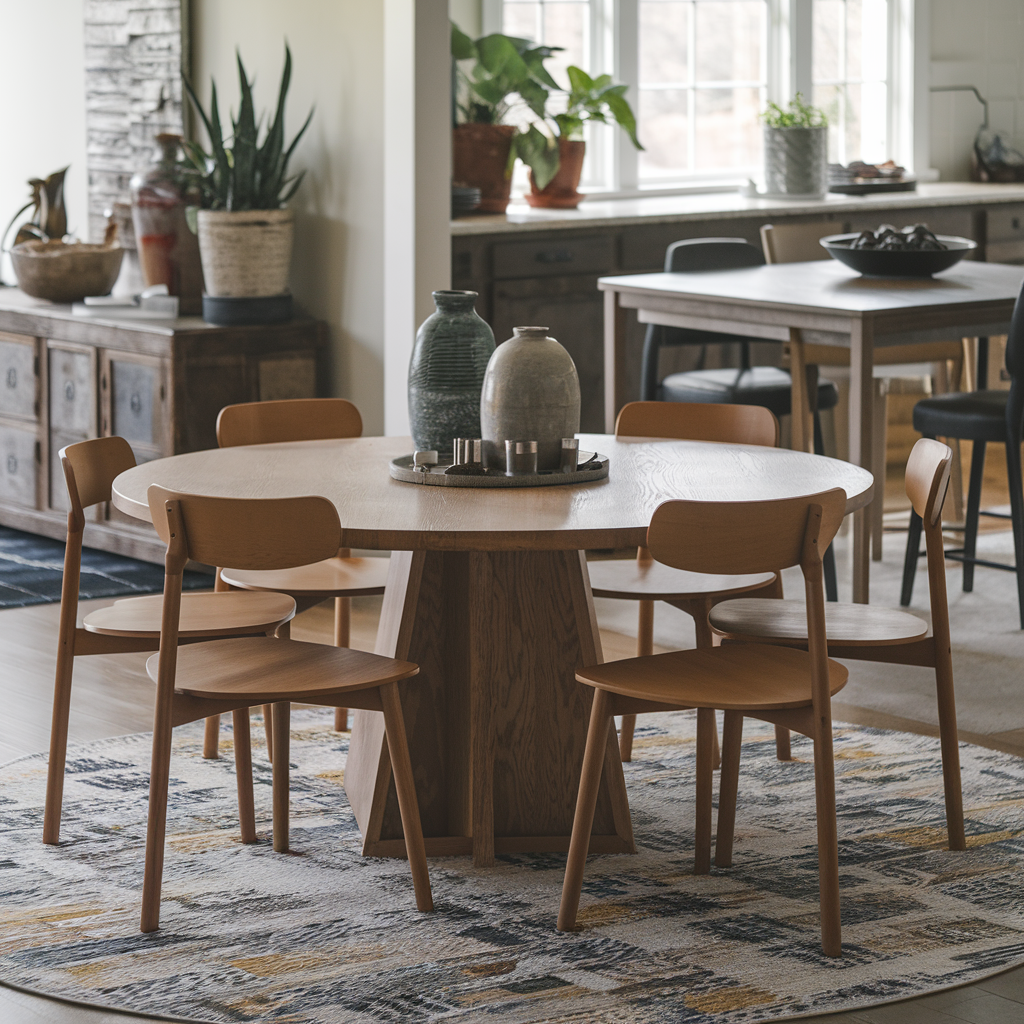Round vs Rectangular Dining Tables: Which Fits Your Space Best?
Choosing the right dining table shape is just as important as selecting the material or size. Among the most common choices, round and rectangular dining tables each offer unique benefits depending on your dining room layout, lifestyle, and seating needs. This guide will help you determine which table shape is the better fit for your space.
Understanding Your Dining Area
Before diving into pros and cons, start by evaluating your room:
- Is it a long, narrow space or more square-shaped?
- Do you need to maximize seating for large gatherings?
- Is the table placed in a dedicated dining room or a multi-functional area?
Your answers will help guide your decision. Let’s compare both shapes in detail.
Benefits of a Rectangular Dining Tables
Rectangular tables are the most traditional and versatile option. They work well in larger rooms or open-concept layouts.
Pros:
- Seats more people: Long sides accommodate more guests.
- Fits narrow spaces: Ideal for rooms with more length than width.
- Easy to pair with benches or armless chairs.
- Expandable options available: Leaf inserts make it adaptable for larger events.
Design Tip:
Choose a solid wood rectangular dining table for timeless appeal and durability. Match with armless chairs to save space. Explore pairings in our Dining Chairs Collection.
Cons:
- May feel too large in smaller or square rooms.
- Can create traffic flow issues in tight spaces.
Benefits of a Round Dining Tables
Round tables are excellent for creating an intimate and balanced dining setting. They naturally encourage conversation and symmetry.
Pros:
- Great for smaller rooms: No sharp corners, easier traffic flow.
- Encourages face-to-face interaction.
- Safer for families with small children.
- Visually softer: Helps break up angular layouts.
Style Idea:
Pair a round wood table with sculpted back or upholstered chairs for extra comfort. Check our Dining Chair Guides & Inspiration for examples.
Cons:
- Limited seating as the diameter increases.
- Difficult to place flush against a wall.
Seating Capacity Comparison
Here’s a general guide to how many people each table shape fits:
Round Tables:
- 36-48 inches: 4 people
- 54 inches: 5-6 people
- 60 inches: 6-8 people
Rectangular Tables:
- 60 inches: 4-6 people
- 72-84 inches: 6-8 people
- 96 inches: 8-10 people
If flexibility is key, consider an extendable rectangular table that adjusts to your needs.
Room Size and Layout Recommendations
- Narrow Room: Rectangular table with bench seating or slim chairs.
- Square Room: Round table to maintain proportionality.
- Open Layout: Rectangular table as a visual anchor.
- Compact Apartments: Small round table to ease movement.
Refer to our Dining Table Buying Tips for more layout ideas.
Style and Decor Considerations
Your table shape should complement your existing décor:
- Modern Homes: Round tables with pedestal bases or mixed materials.
- Traditional Interiors: Rectangular tables with carved legs and formal dining chairs.
- Scandinavian Style: Light wood round or oval tables with minimalist chairs.
- Rustic Farmhouse: Rectangular tables with a distressed finish and ladder-back chairs.
Explore more styling combinations on mazonvintage.com.
Final Thoughts
Both round and rectangular dining tables have their strengths, and the best choice depends on your room layout, seating needs, and design preferences. Round tables promote closeness and are ideal for small spaces, while rectangular tables offer capacity and structure in larger rooms.
Still deciding? Browse our curated selection of dining tables and chairs, or read more expert advice in the Dining Tables Collection and Wine Storage & Cabinet Advice.

